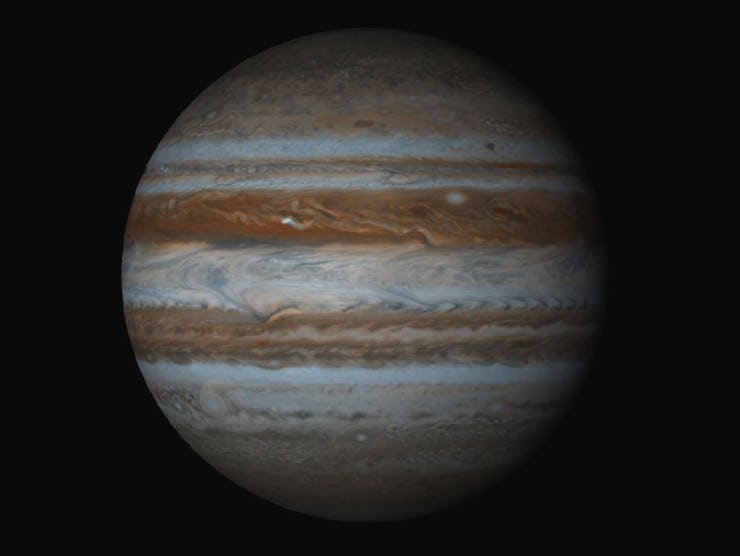Jupiter Is at Opposition on Tuesday and That's Way Cooler Than You'd Expect
It's the best time of the year to see the biggest planet in the solar system.

Jupiter will be directly opposite the sun in the sky on the morning of March 8, at 6:00 a.m. EDT. Our solar system’s largest planet will be rising just as the sun sets, and become the brightest object in the night sky aside from the Moon and the International Space Station. In other words: tomorrow would be an excellent time to cancel your plans for the night, grab a telescope, and do some planet-gazing. Jupiter won’t be in opposition for another 13 months. (Well, 399 days to be exact.)
At 300 times the mass of our planet, Jupiter is the largest celestial body in the solar system not named the sun. The gas giant is a violent environment of extreme temperatures and electricity.
If you’re planning to find Jupiter on Tuesday, you’ll want to look towards the constellation Leo. Jupiter will be about a third of the way between the southern stars of Regulus in Leo and Spica in Virgo. It will be at its brightest around midnight. A pair of binoculars would work, but you should really find an amateur telescope if you want to try to spot some of the bigger characteristics of the planet — including its famous Great Red Spot — the oldest and biggest storm system in the solar system and at least three times the size of Earth.
Of course, the really great time to see Jupiter in opposition was six years ago, in September of 2010. The planet was 46 million miles closer than it normally is when its opposite the sun, and it won’t hit that point again until 2022. Do yourself a favor and check it out on Tuesday and see what all the fuss will be about six years from now.